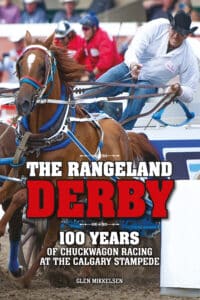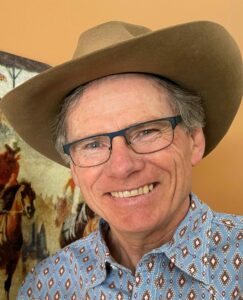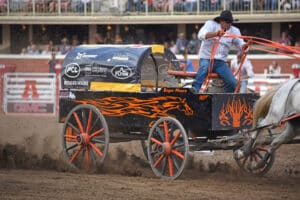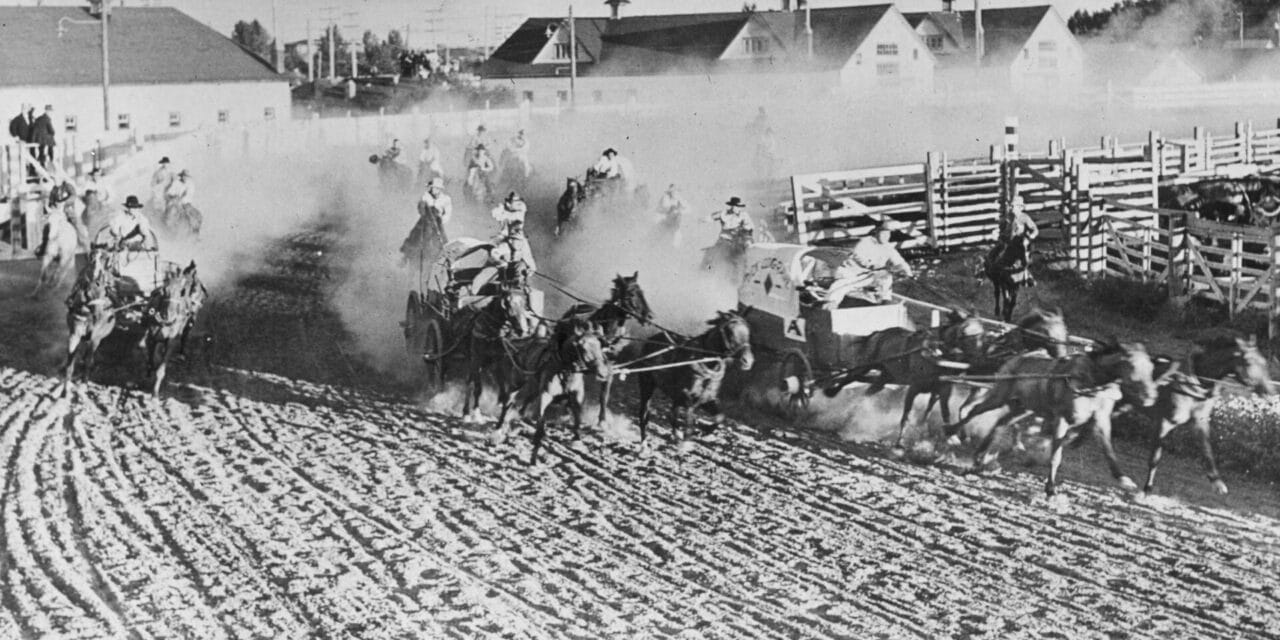DUSTY DAYS: A chuckwagon race is shown at the Calgary Stampede in 1938. Venues industry veteran Glen Mikkelsen wrote a a book to mark the races’ 100th anniversary. (Getty Images)
The Rangeland Derby: 100 Years of Chuckwagon Racing at the Calgary Stampede Traces History of Sometimes Deadly Races
To mark the 100th anniversary a unique event in sports and entertainment, Folklore Publishing has released a book written by veteran facility operator Glen Mikkelsen: “The Rangeland Derby: 100 Years of Chuckwagon Racing at the Calgary Stampede.”

Mikkelsen, 56, who manages entertainment at the CN Centre in Prince George, British Columbia, worked the Stampede as a youth and first caught wind of the races at the tender age of four.

Glen Mikkelsen
Later, in the early 1970s, he would watch the races on his grandmother’s black-and-white television before seeing many of them live.
“The excitement of it never diminished, he said. “It’s something I’ve always been interested in.”
Mikkelsen insists the annual summertime event is “Canada’s greatest race.”
“There’s nothing else in Canada that has the longevity and international reputation that the Calgary Stampede Rangeland Derby has,” he said. “Over 11 million people have gone to see the chuckwagon races at Calgary over the last 10 decades.”
One year at the Stampede, Mikkelsen and a buddy sold Fiddlesticks.
“Vanilla ice cream bars dipped in chocolate and rolled in nuts,” he recalled. “We still laugh about it.”
The races take place at the Stampede grounds’ 17,000-seat GMC Stadium, which can accommodate another 8,000 standing.
The races have been made as safe as ever, but there remains an element of danger for horses and riders.
“The last fatality occurred 24 years ago in 1999,” Mikkelsen said. “Both horses and men have been injured and/or killed”
The races harken to the rough-hewn history of life on the Canadian prairie.
“It developed on prairie fields and foothills with wagons and horses clattering and banging over gopher hole-filled fields,” he said. “Then, as they developed it and moved onto a real racetrack and the rules evolved, continual safety improvements have been made for horses and men.”

HITCH YOUR WAGON: Roger Moore competes in the GMC Rangeland Derby Chuckwagon Races at the Calgary Stampede on July 6, 2018 at Stampede Park in Calgary, Alberta. (Brett Holmes/Icon Sportswire via Getty Images)
A big wreck occurred in 1986 when a horse stepped into the stove grill dangling from another wagon, leading to design changes the following year, Mikkelsen said.
“Alcohol and drug testing for the competitors are now a part of it,” he said. “They do a fitness-to-compete program with the Stampede, so all the horses are microchipped. That allows veterinarians to keep an eye on which horses have raced. Horses are only allowed to run a maximum number of races before they need a day of rest or two. They’re doing all kinds of things to make sure the events are as safe as they can be.”
Mikkelsen said he wrote two books on the chuckwagon races about 20 years ago and delighted in this latest opportunity to share what he knows about the event, its history, the personalities involved “and just the very special nature of it.”
“I knew this anniversary was coming up in 2023, and people have bucket lists, and this was one on my list,” he said. “It’s been one of my life’s goals to put this book together and I was fortunate to find a publisher that was as excited about it as I am.”
The economic impact and direct spending on the races and evening shows, which attract 15,000-17,000 nightly, and the rest of the Stampede, which includes a rodeo that draws just as many to the stadium each afternoon, are not part of the book, but Mikkelsen said both are considerable.
“With an average ticket price of $100, that’s $1.5- to $2 million in ticket revenue, plus all the ancillary that goes along with that, and all the tourism dollars from people around the world, it’s a huge impact on both the Stampede and the city of Calgary,” he said.
One of the many unique aspects of the Calgary Stampede are the pancake breakfasts offered for free outside downtown Calgary hotels during the event.
“That is intrinsic with the whole hospitality of chuckwagons,” Mikkelsen said. “Not only did the first chuckwagon races start in 1923, but also the first time the free pancake breakfast happened in downtown Calgary. That link of western Canadians sharing food, sharing fellowship behind the chuckwagon is part of the special nature of the sport and the event. It makes strangers feel welcomed and that carries on throughout the events in Calgary as well as around the racetrack.”
The book includes interviews with cowboys and judges as well as Les McIntyre, the event announcer for almost 15 years, and Eddie Melville, an outrider who’s “been doing it for decades,” Mikkelsen said.
This year’s Rangeland Derby is scheduled for July 7-16.
Mikkelsen didn’t set out to be a writer, but his talent did not go unnoticed.
He earned a degree in Canadian Studies in university, focusing on communications and cultural studies, and took some history courses.
“When I was in university one of my professors thought one of my papers was solid enough to be submitted for publishing, so he submitted it to Alberta History, which is a magazine, and they published it,” he said. “I thought that was great and it just carried on from there.”
The article, published in 1987, was titled, “Indians and Rodeo.”
“You’d have to change the name now, but it was about indigenous people and their involvement with rodeo,” said Mikkelsen, who also writes a regular column in IAVM’s Venue Professional publication.
“It’s called ‘In the Quirks,'” he said. “I look at all kinds of different types of subjects in the sports and entertainment industry.”
(Editor’s note: this story has been updated.)







